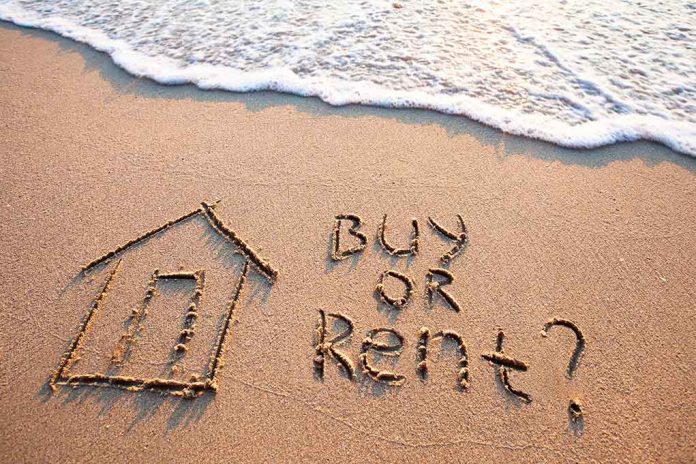
What You Need to Know about Home Ownership via the Rent-to-Own Path
(RightWing.org) – Home ownership is tough to obtain. The cost of homes seems to be forever rising, and when you’re paying monthly rent and other increasing bills, it’s almost impossible to save that requisite down payment almost any financing option will require. Fortunately, your dream home could be within your grasp if you’re already able to pay rent. A rent-to-own arrangement could be the best thing for you.
What’s a Rent-To-Own Property Arrangement?
With a rent-to-own transaction, the tenant (renter) rents the property for an agreed upon amount of time. Before the lease is up, the renter can buy the home. During the rental period, the renter can determine whether the location is right for them while they build equity in the property via the rental price. Hopefully, it’s a good fit for their lifestyle and family. Though they don’t have a mortgage, they can still build equity.
What’s in it for the landlord? The landlord gets a quality tenant invested in long-term residence who will likely take exceptional care of the property, as it will someday be their own. The landlord doesn’t have to worry about the tenant vacating and having to find and qualify new renters while sitting on an empty property.
What Does a Rent-To-Own Agreement Look Like?
When a rent-to-own arrangement begins, the tenant puts forth an “option” fee. The option fee reflects a percentage of the price of the purchase, but like many things in real estate transactions, it’s negotiable. This fee ensures the tenant has a buy option at the end of the lease term. Additionally, the tenant should expect to pay a little more rent for this reward–probably slightly more than market value.
Fortunately, that extra amount goes to something–rent credits, which the tenant pays instead of a standard down payment. If you can pay a decent rental cost but don’t have a down payment, this could be a great opportunity for you. The down payment amount is essentially spread out over the duration of the rental.
There are two types of rent-to-own agreements you can consider:
Lease-Option Agreement: In a lease-option agreement, the landlord is prevented from selling the house to anyone other than the tenant. At the end of the lease, the tenant may buy the home. The price is to be agreed upon at that point, and both parties should get appraisals to determine an accurate home value, as well as inspections to ensure good, safe conditions. Some lease-option agreements also cover what happens if each party’s appraisers come to a different value. In this type of agreement, the rent credits and option fee make the final cost lower. The tenant isn’t obligated to buy the home, but if they forfeit that opportunity, they lose their rent credits and option fee.
Lease-Purchase Agreement: With a lease-purchase agreement, the tenant is obligated to purchase the home at the end of the lease. Both the landlord and the tenant are committed to the process, unless one party breaches the contract or the tenant can’t get a mortgage for the amount still outstanding after the rent credits and option fee. In this type of agreement, common repairs and other expenses (such as sewage bills, homeowner association fees, and property taxes) are potentially on the owner instead of the landlord.
Is Rent-To-Own Right For You?
Always consult a real estate attorney before signing a rent-to-own agreement (or any kind of real estate agreement beyond a very standard lease). You want to make sure you can match the terms of the agreement and do not experience any surprise fees.
Rent-to-own is ideal for those who can qualify for a mortgage by the end of the lease term, are paying down their debt as they rent, want to gain more employment history or higher salary as they rent, and need time to raise their credit score while renting. If you’re a non-traditional buyer, rent-to-own could be right for you.
Copyright 2023, RightWing.org






















